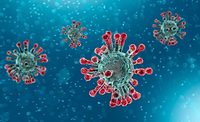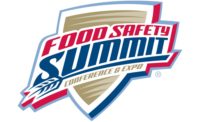The state of food safety 2020: making sense of the chaos

COVID-19 has been brutal on the industry. We have seen major producers temporarily shut down, entire segments put out of business, regional disruptions and politicians getting involved in the manufacture and distribution of meat and poultry. I am not telling you anything you don’t know; we have all lived it.
There have been some silver linings, though. By implementing virus controls to protect our employees, we have also inadvertently implemented controls that have a positive impact on the control of norovirus, hepatitis A, etc. And our small producers were able to dramatically increase production and harvest volumes to help offset larger production shortages. While most were regional, the impact of small to midsize operators was greatest. A 20-person shop in a town of 30,000 operating as the sole supplier of ground beef became a pretty amazing place to be.
State of the Industry 2020
OverviewBeef (NCBA)
Beef (FQF)
Pork *going live Oct. 12
Chicken
Turkey *going live Oct. 8
Veal *going live Oct. 9
Lamb *going live Oct. 14
Seafood *going live Oct. 15
Food Safety *going live Oct. 8
Workforce *going live Oct. 16
Sustainability *going live Oct. 19
Packaging *going live Oct. 20
Watch the 2020 State of the Industry Webinar
Register for free today!
On the downside, we have lost friends and colleagues and seen our industry get a black eye.
Regulatory science
While dealing with COVID-19, we have also seen the U.S. Department of Agriculture (USDA) pushing the expectations of what we maintain for science. In public meetings, USDA officials have admitted they don’t have the hard science they need and have asked industry to provide it. The real issue is they haven’t stopped putting out policy and other regulatory findings that, in many cases, directly contradict how we produce food.
We are seeing this in USDA Farm Service Agency (FSA) findings, mainly pointed at smaller facilities, which seem to want wholesale changes in production. An example is statements on heat-resistant Salmonella. There is science that discusses two ways bacteria become heat resistant: by producing additional proteins when the cell detects increased heat, or by reducing internal moisture content to reduce the volume inside the cell to help proteins maintain their shape. USDA Food Safety and Inspection Service (FSIS) policy fails to address this and instead focuses on the hypothesis that by using standard manufacturing processes we are producing adulterated food.
Fortunately, companies and universities are working to demonstrate through science that we are in fact producing safe meat and poultry products. The studies referenced by FSIS fail to identify a true issue. As an example, we recently read an FSA report that asserted bacon was dangerous because it used the Appendix B cooling parameters for cured product. This was the 1999 version. A quick review of CDC foodborne outbreaks shows three instances of bacon being a vector — all were norovirus and the contamination was at a restaurant. Yet FSIS policy insists on in-house micro studies to validate that the procedure used for years in the industry will produce a safe product.
GFSI
We saw a nearly complete suspension of audits in some regions. In others, it appeared as if there were more availability. One thing that auditors are keying in on is how you are handling COVID-19 controls in your plant. While it isn’t a food-safety issue we typically see, the food-safety teams have to take the lead in vetting and assuring compliance with controls. There are a lot of recommendations out there. The key is getting the right controls for your facilities in place and routinely ensuring they are properly implemented.
Pulling it together
I must admit to being somewhat amazed at how well the industry has endured the chaos wrought by COVID-19 and kept a focus on food safety. The production ramp-ups, shut-downs, sudden loss of key employees, etc. all put an enormous strain on the industry as a whole and FS&Q teams in particular. Yet we managed to dramatically increase production to meet a sudden need and meet it safely.
We have seen innovative products such as Biomist and other alcohol vapor systems become very popular as well as increased scrutiny over basic sanitation such as hand-washing. As an industry, we responded rapidly when suddenly no one could go to a restaurant, schools were closed and parents had to suddenly feed kids (and themselves) at home. The product mix needed by the American consumer changed overnight, and the industry with cooperation of FSIS made it happen.
Crystal ball
Going forward, one big change we all must face is employee training. Bringing people together just isn’t feasible for the foreseeable future. While there are digital platforms available for training, they leave a lot to be desired. The different trade associations have done a good job of putting together digital training for their members, yet it isn’t enough. We need a standardized online food-safety training system that is universally recognized.
It is also an election year, which makes predictions a murky business. Democratic presidential candidate Joe Biden has called for more regulatory oversight of food facilities. The current administration has taken a much more balanced approach. The leadership team at FSIS has been very responsive to the industry needs. Yes, we will be arguing about science; however, they have managed to listen and work with industry when we had to suddenly shift priorities.
Closing thoughts
I am proud to be working in an industry that stepped up to the challenges of 2020. I believe we all learned a lot. Specifically, we can’t count on the government to give us the answers we need in a crisis. Our small and medium-sized processors have seen a dramatic jump in volume, and our large processors have been able to spin product mixes at an astounding pace to keep up with consumer demand.
The coming science discussions — be they about thermal lethality, antimicrobial interventions or some other issue — just cannot be left up to the government. We are the industry that feeds America and we must take the lead. We have the knowledge and technology. Now we need to leverage it so the rules and regulations of the future make sense. NP
Looking for a reprint of this article?
From high-res PDFs to custom plaques, order your copy today!







